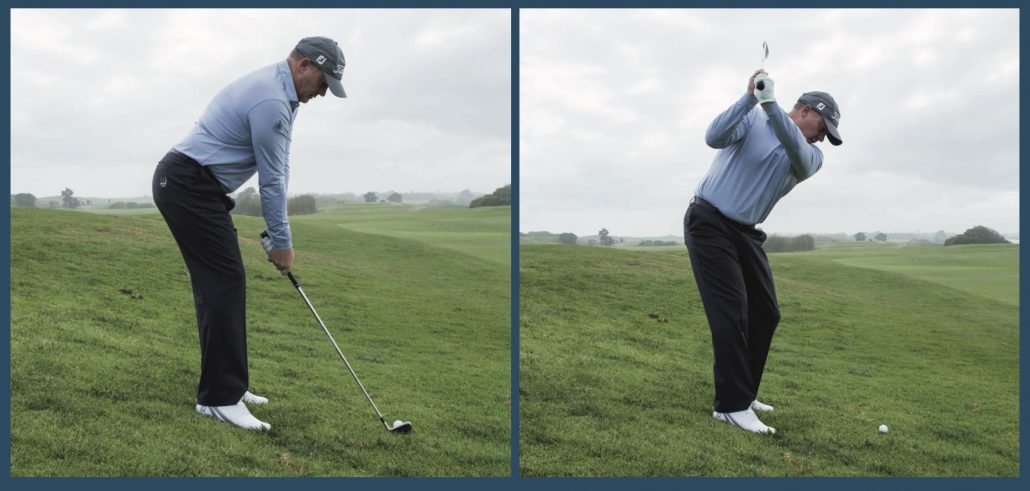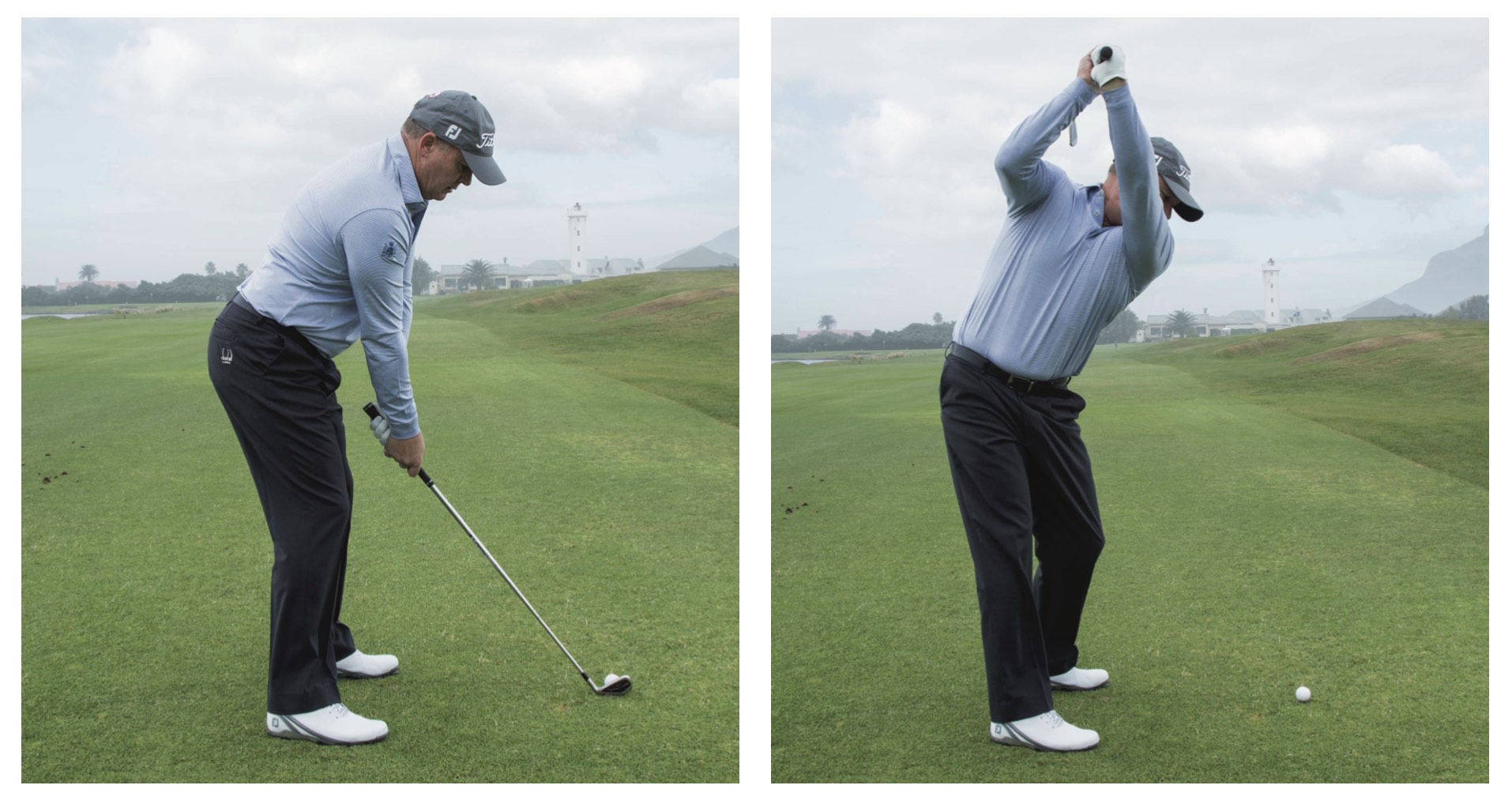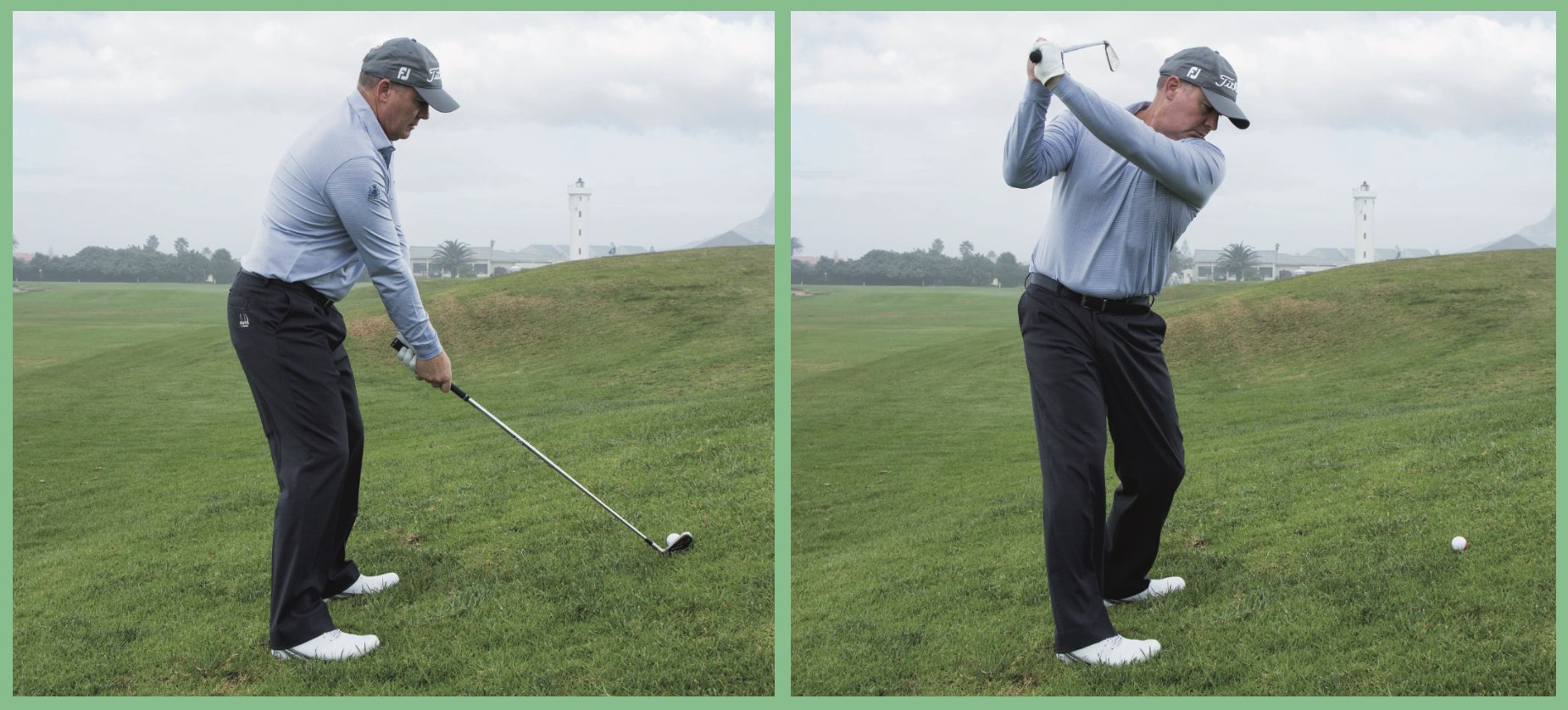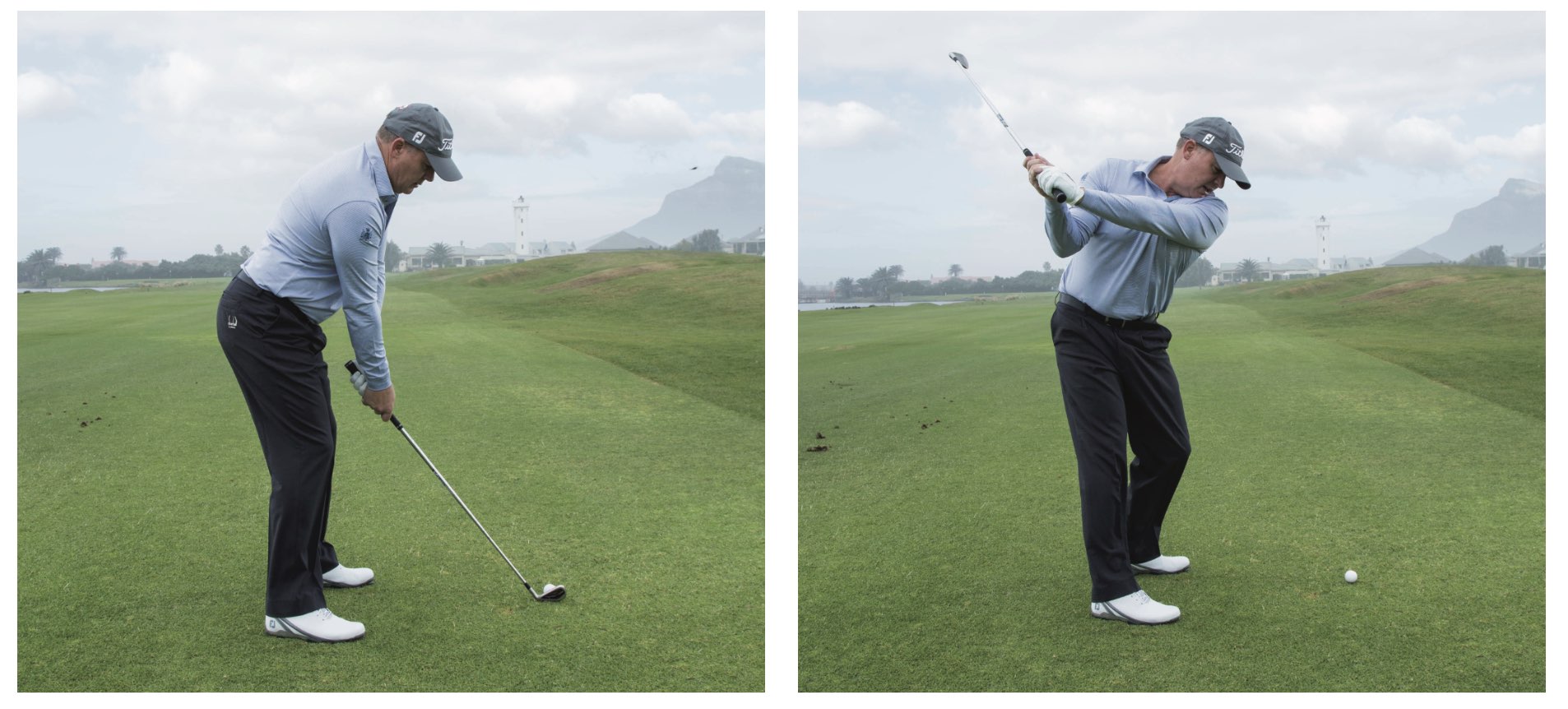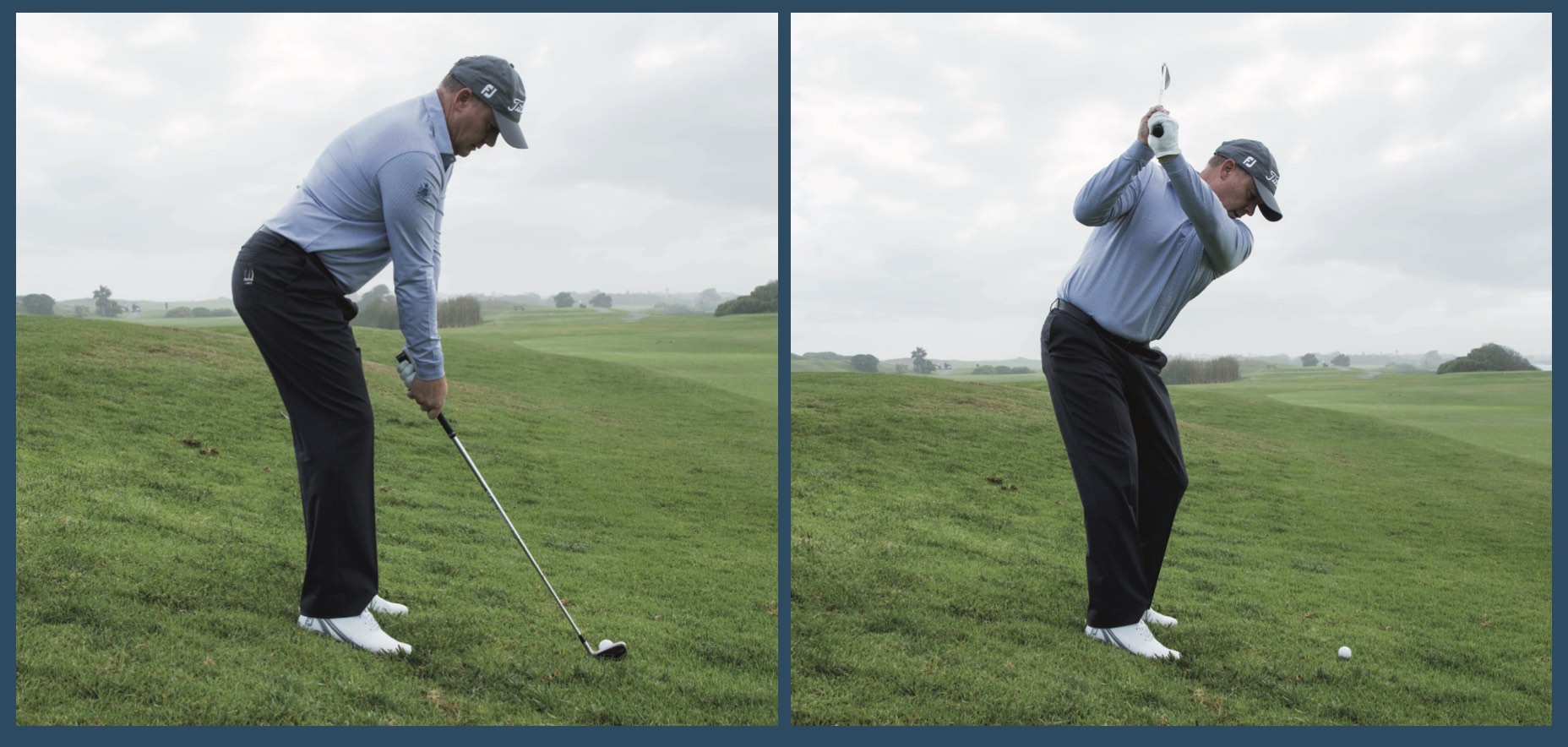GRANT HEPBURN highlights some of the most effective golfing exercises devised. He explains why they have stood the test of time and how they can help you take your game to the next level.
It’s estimated that up to 90% of amateur golfers swing off plane. By swing plane, I refer to the path your golf club’s shaft follows when you swing, on the backswing and the throughswing. For some, the swing plane is too steep (also called too upright), while for others, it is too shallow (or too flat) – leading to poor shots.
A good swing plane is an important part of the golf swing because it will improve your shot consistency, accuracy and distance.
You can check your swing plane easily enough if you have access to a full-length mirror. Simply set up with any club, from driver to mid-iron, with the mirror to your right. Now swing to the top and stop and take a look in the mirror.
Too upright
A swing that is too upright can cause issues by creating a steep angle of attack in the downswing. Most amateurs are not able to drop the club back down on to a shallow sweeping angle of attack if the backswing is too upright.
Instead, they tend to chop downwards from this high position and that causes a vicious glancing blow to the ball.
Most times when a downswing is too steep, the club approaches the ball from a sharp angle and swings left through impact, causing complete loss of accuracy.
The drill
One of the great, simple drills for an overly upright swing is to hit balls on a sidehill, with your feet below the ball, as I have shown above. This set-up encourages you to play a much flatter swing.
A good swing-thought is to imagine making more of a baseball-type swing here in order to make better contact. This will be a natural swing to make when confronted with this type of sidehill lie.
If you hit a few dozen balls from this position, you will start to flatten and round out your swing to the extent that you will begin to make a better approach into the ball.
The club will swing on a better path into the ball and soon you will hit with more power and a sweeping type approach that will see the club and ball swing down the same target line together.
This can only help with power and accuracy.
Too flat
Although some top pros such as Matt Kuchar make the most of a very flat swing, amateurs often struggle to control their shots because the club approaches the ball too much from an ‘in to out’ path on the downswing.
When this happens, you have to make sure there is a lot of hook spin on the ball in order to get it to turn back towards the target. Too much hook spin with the irons causes a topspin type of effect on the ball, making it hard to stop it on the greens.
Many amateurs make this flat backswing and then, in order to compensate, they change direction and loop their arms over and out in an effort to try to get the club back on the correct path.
This inevitably leads to an overcompensation and the player once again has to deal with a club that approaches the ball on a steep path and from ‘out to in’.
In other words, the flat backswing is transformed into a steep downswing and once again the golfer is going to struggle with consistency when this happens.
The drill
This drill is basically the opposite to the one described for an upright swing. Once again, we have to use a sidehill lie, but this time set up so that your feet are above the ball.
You will need to hold the grip of the club a little higher up to reach the ball more easily and you will find that you need a bit more weight on your heels in order to maintain balance.
Due to the set-up and the sidehill lie, the backswing will automatically force you to get more upright as you hit the ball.
If you swing too flat from this lie you will miss the ball by winging over the top of it.
Once again, hitting a few dozen balls from this lie will result in a more upright and orthodox swing with far less compensation or adjustment needed in the downswing.
– This article first appeared in the February 2023 issue of Compleat Golfer magazine.


